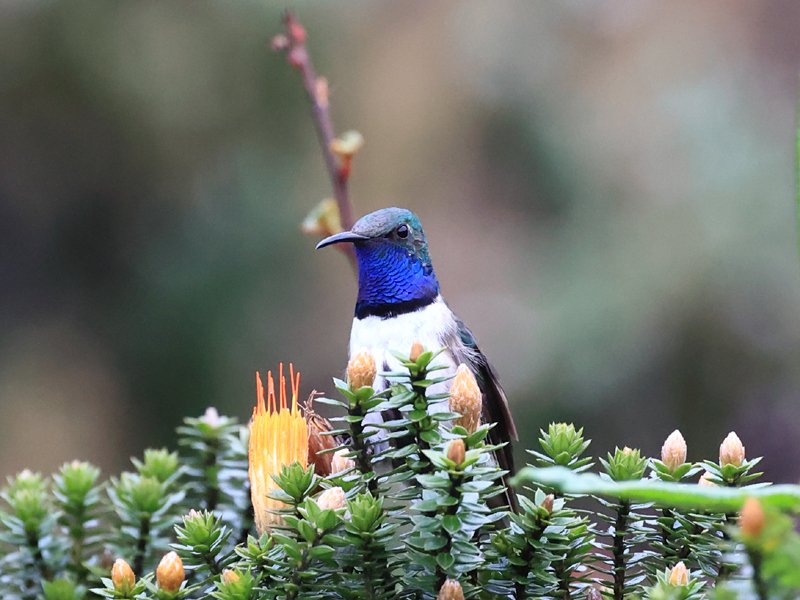Blue-throated Hillstar
Oreotrochilus cyanolaemus
 ·
Oreotrochilus cyanolaemus
·
19-07-2022 · Hugo Moerman
·
Oreotrochilus cyanolaemus
·
19-07-2022 · Hugo Moerman
| Datum | 19 juli 2022 |
|---|---|
| Locatie | Ecuador - Cerro de Arcos |
| Fotograaf |
|
| Bekeken | 1761 × |
Eén van de specialiteiten in zuidwest Ecuador is deze Blue-throated Hillstar. De eerste die de vogel goed in beeld kreeg was Dave van der Spoel. Hij riep naar ons dat hij de vogel in beeld en doordat we verspreid over de helling stonden, moesten we ons eerst een weg banen door allerlei struiken wat tot hilarische momenten leidde. Uiteindelijk met de hele groep goed gezien op de toch wel natte en koude Cerro de Arcos. Zie ook de verhalen van Pieter de Groot Boersma op zijn Facebook van onze 6-weekse trip door Ecuador. |
Discussie
George Sangster
·
7 juni 2023 14:37
Tinoco, BA, Freile, JF, Molina, P, Carrasco, A, Ordoñez, N & Bonaccorso, E 2023. Ecology and distribution of the “Critically Endangered” Blue-throated Hillstar Oreotrochilus cyanolaemus. Bird Conservation International 33, e60, 1–9.
The Blue-throated Hillstar Oreotrochilus cyanolaemus is a recently described hummingbird endemic to the southern Andes of Ecuador. This “Critically Endangered” species faces multiple conservation problems; thus, acquiring basic ecological information is a key step for guiding sound and integral conservation actions. We performed a series of expeditions throughout the cordillera Chilla-Tioloma-Fierro Urco to gain new data about its ecology, abundance, breeding, and distribution. From November 2019 to March 2020, we surveyed a total of 161.6 km searching for O. cyanolaemus, and gathered data on encounter rates, microhabitats used, and flower resources used. From November 2020 to January 2021 we studied the breeding ecology of the species. Occurrence records of O. cyanolaemus were used to build a species distribution model, based on climatic variables and the normalised difference vegetation index (NDVI). We found that the species is relatively more abundant in the western and central portion of its distribution range. Males were found using more shrubby habitats than females, who used more open habitats. They visited flowers of 11 plant species, with Chuquiraga jussieui and Puya ssp. being the most frequently used flowers. Nests were found in caves and rocky walls, and only one out of three active nests was successful. The distribution model indicated that the species has a potential distribution range of 62.7 km2. This manuscript is the first comprehensive evaluation of the ecological requirements of the species, and the information provided has important potential for use as a conservation guide for the species and its habitats.
Gebruikers van het forum gaan akkoord met de forumregels.
